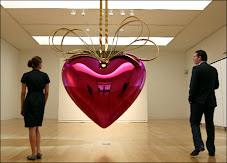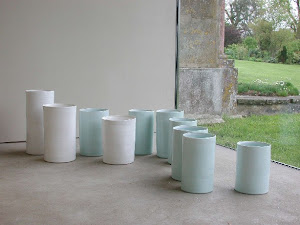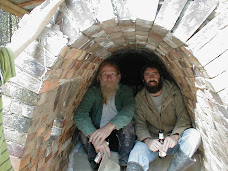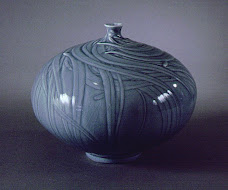If I could have any ceramic piece in the world, I would most likely request this bowl. I think that the Kizaemon Edo tea-bowl is a representation of our human connectection to mother earth, to our infinate universe, and of our seeking something higher. It's hi(story) makes it one of the most important vessels in Japan. I have an attraction to this tea-bowl because of it's rough surface, it's use in spiritual practices in Japan, and because of what other's have said about it. If I did have this bowl I would probably not use it - in order to preserve it as well as possible.
In his book The Unknown Craftsman: A Japanese Insight into Beauty, Soetsu Yanagi discusses the The Kizaemon Tea-bowl, a bowl made in Korea in the 16th century and selected by Japanese Tea masters in the early 17th century to be used as an artifact in the Tea ceremony:
This single Tea-bowl is considered to be the finest in the world. . . . to contain the essence of Tea. . . .In 1931 I was shown this bowl in company with my friend, the potter Kanjiro Kawai. For a long time I had wished to see this Kizaemon bowl. I had expected to see that "essence of Tea," the seeing eye of Tea masters, and to test my own perception; for it is the embodiment in miniature of beauty, of the love of beauty, of the philosophy of beauty, and of the relationship of beauty and life. It was within box after box, five deep, buried in wool and wrapped in purple silk.When I saw it, my heart fell. A good Tea-bowl, yes, but how ordinary! So simple, no more ordinary thing could be imagined. There is not a trace of ornament, not a trace of calculation. It is just a Korean food bowl . . . that a poor man would use everyday. . . .A typical thing for his use; costing next to nothing . . . an article without the flavour of personality; used carelessly by its owner; bought without pride; something anyone could have bought anywhere and everywhere. . . . The kiln was a wretched affair; the firing careless. Sand had stuck to the pot, but nobody minded; no one invested the thing with any dreams. It is enough to make one give up working as a potter. . . .But that was as it should be. The plain and unagitated, the uncalculated, the harmless, the straightforward, the natural, the innocent, the humble, the modest: where does beauty lie if not in these qualities? The meek, the austere, the unornate—they are the natural characteristics that gain man's affection and respect.More than anything else, this pot is healthy. Made for a purpose, made to do work. Sold to be used in everyday life. . . . Only a commonplace practicality can guarantee health in something made. . . .Emerging from a squalid kitchen, the Ido bowl took its seat on the highest throne of beauty. The Koreans laughed. That was to be expected, but both laughter and praise are right, for had they not laughed they would not have been the people who could have made such bowls . . . The Koreans made rice bowls; the Japanese masters made them into Tea-bowls. . . .
Subscribe to:
Post Comments (Atom)
.jpg)












1 comment:
I am curious about your instinct to guard the life of this teabowl by not using it. Would it not change and grow and become more valuable through use and the patina of use through time? I wonder if this idea would be in line with Japanese ritual and thoughts about use or if it would be very different?
Molly
Post a Comment